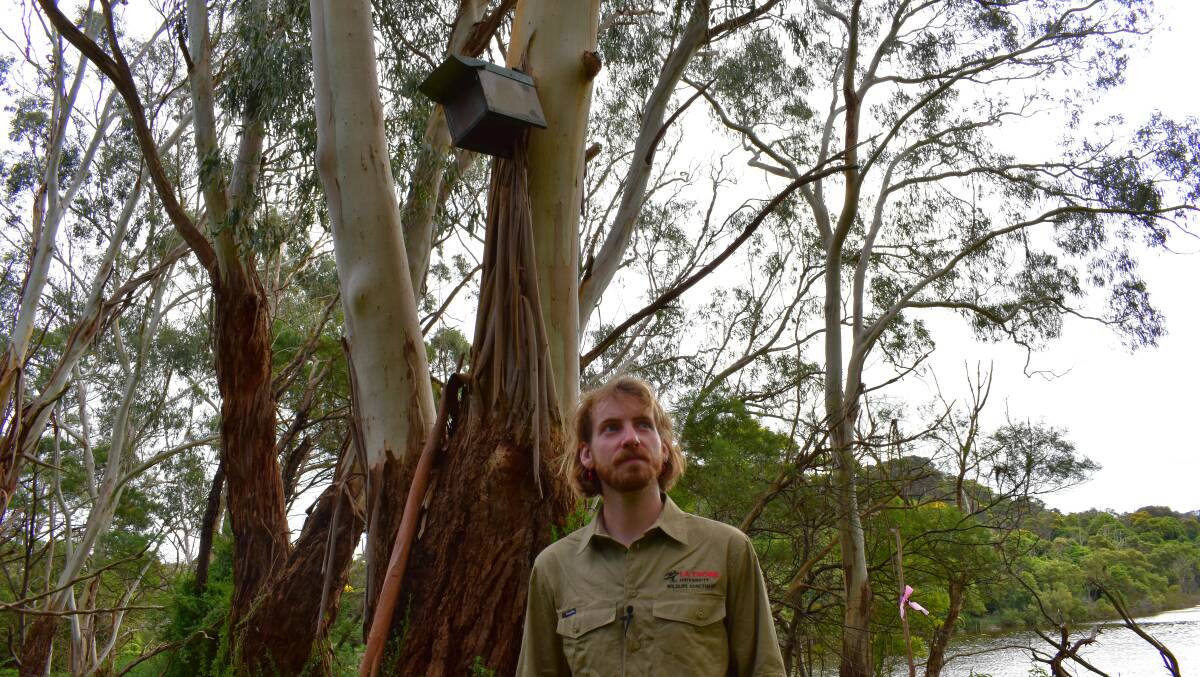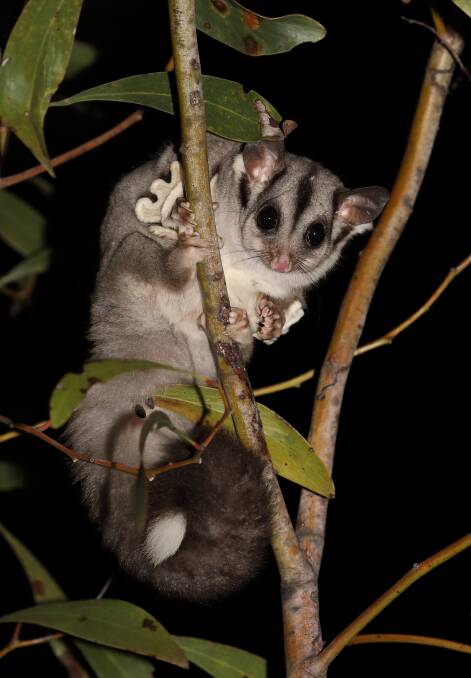For Jarah Marginata conservation is more than just a job - it's a way of life.
He helped raise $1000 in just two weeks to save a local population of sugar gliders. Now he's dedicated to keeping them alive.
Born and raised in Victoria's south-west, the 28-year-old spent his childhood visiting nature reserves on a weekly basis.

"It was just always a passion of mine," he said.
Premier among them was Tower Hill, an inactive volcano 15 kilometres north-west of Warrnambool.
When home becomes hostile
While well-regarded for its beauty and natural vistas, the reserve has become increasingly hostile to native wildlife due to numerous invasive species.
Its sugar glider population completely died out in the first half of the 20th century and efforts to reestablish it proved largely unfruitful.
"They were introduced here back in the 1970s and '80s; 100 gliders were released in total," Mr Marginata said.
"Initially, the population was doing well but after a lack of management through the '90s and early 2000s, it appears to have dropped to an estimated seven individuals.
"It is a sad sign that they have declined and it is indicative of the wider issue in this reserve and a lot of the reserves around the area as well."
Humans lend a helping hand
To tackle this, Mr Marginata helped launch a fundraiser alongside the Friends of Tower Hill volunteer group to install 20 new nest boxes by the end of 2023.
The initiative is a crucial step in maintaining the small population.
Limited habitat is one of the core reasons for the species' decline as gliders require tree hollows to make their nests, which can take more than a century to form.
Tower Hill's canopy trees were at most 18 years old when the glider program kicked off in 1979, meaning hollows aren't likely to form for another 50 years.

"Nest boxes were introduced along with the gliders because there's no natural habitat for them. This reserve is too young to allow for the hollows to occur," Mr Marginata said.
"Following the early 2000s, the nest box program was abandoned and they have since fallen into disrepair except for 11 that were found still standing."
Having opened to donations in late July, the new campaign raised more than $1300 towards its $2000 goal within a few months.
Mr Marginata said he was thrilled with the result so far.
"It will boost the available habitat for them, give them protection during cold winters and hot summers to allow their population to expand further," he said.
And the Friends of Tower Hill will keep an eye on the glider population over the coming years to see if it increases.
Calling all young volunteers
The conservationist thought the project was a good opportunity to get more people involved in environmental work.
"The industry's currently dominated by older volunteers but there is an increase of young people coming in. It's always a good sign and it brings more life to the issues," he said.
"I think the best way to get more young people into the industry is education.
"Letting them know what the problems are and how they can solve it and getting them involved in volunteering like what we do with the Friends group here."
But Mr Marginata said the larger issue facing the conservation industry was a lack of opportunities.
Limited funds for the environment
Too few people were able to find paid work.
"The field always needs more people but the main issue is budgeting. There's just not a lot of funding Australia-wide going into conservation efforts," he said.
Travis Scicchitano, Wild Futures project officer at Conservation Volunteers Australia, said for all the talk about the importance of Australia's environment, resources were scarce.
"We could employ a million people tomorrow and still not achieve what we'd like to achieve," he said.
"You'd like to think that demand will force some more funding into the field but sadly, the jobs just aren't there."
Despite this, Mr Scicchitano said more people than ever were pushing to get involved.
"This younger generation is being bombarded by a lot of doom and gloom about the environment and climate change. I think the demand is coming from the children and teens themselves," he said.
My story

Trying anything entrepreneurial requires a willingness to take a risk and enter the unknown.
Like all of my fellow ACM regional journalism cadets, I moved to a new city at the start of 2023 to report local news, so it's something I can relate to.
Regional communities are so often overshadowed by metropolitan areas in terms of funding and media attention, which demands even more creativity from entrepreneurs if they want to make their ideas work.
There's a reason why the phrase "have a go" is so popular in Australia and it's something exemplified in Jarah's work.


